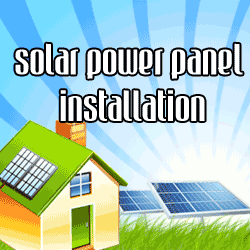

Sustainability has become a key consideration of manufacturing in recent times - with the intended effect being that anything we make or build, not have a deleterious effect on the health of the planet. Indeed, sustainability is about using resources our in a healthy and environmentally friendly manner and in such a way that provide for the long term needs of our community. Sustainable home building pursues two broad themes: construction using environmentally friendly materials and the most efficient use of energy that is possible.
It should first be pointed out that there is much greater scope for sustainability when building new houses than there is when simply doing a green remodel of an existing dwelling - but that is not to say that there aren't things that any of us can do, irrespective of where we live. Buying more energy efficient appliances, using water conserving showerheads, using aerators in sink faucets and revamping insulation are all within the reach of any home owner. All of these measures save money in the long run by cutting down on our energy and water bills, and because they're utilizing less energy, they're also measures that will see that we're not unduly adding to the planet's stock of greenhouse gases.
Of course, if we're building a house from scratch then we have much greater scope to ensure its sustainability. The two areas that a prospective builder needs to concentrate on when building a sustainable home is energy efficiency and using sustainable harvested eco-friendly materials.
There are a few key areas that we can focus on when building an energy efficient house. The most abundant and cost free energy source we have is sunlight and a good passive solar design will ensure that our house is capturing enough sunlight to be absorbed by the surrounding thermal mass, which will then release heat back into the room when the sun goes down. The utility of this design is dependent on also having good insulation. The sun can also be used to generate a large portion (if not all) of our heating and electricity needs. By placing solar panels on the roof we can convert sunlight into electricity to heat water and power domestic appliances. Advances in solar technology are rapidly seeing solar power become a more cost effective way of generating power. These measures will all be complemented by making sure that all your electrical appliances are energy efficient.
Consideration should also be given to how water will be used in your home. Using low water capacity toilets and flow restricted shower heads are practices that are now actually quite common. This theme can be extended by diverting gray water from clothes washing and bathing facilities to watering plants, and by catching rain water from roofs for use inside the house. Concentrating your landscaping on indigenous drought tolerant plants can also save you an enormous amount of water.
A green builder will also ensure that he is only building with sustainable materials - ideally ones that have been certified as sustainable by the Forest Stewardship Council (FSC)- an independent 3rd party non-biased ratings agency that certifies materials as being sustainable or not; as well using non-toxic paint and finishing products.
For more information on sustainable home building go to http://www.sustainable-home-site.com
Article Source: ArticlesBase.com - Sustainable Home Building - Constructing A Greener Environment




0 comments:
Post a Comment